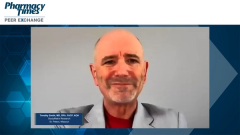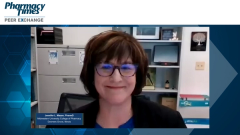
Treatment Options for Migraine Prophylaxis
Preventive therapies available for patients who require migraine prophylaxis and factors that impact treatment selection.
Episodes in this series

Mark Percifield, PharmD: Amy, if I could go back to you next—when is prophylactic treatment for migraine indicated vs these acute treatments that we’ve been talking about?
Amy R. Dunleavy, PharmD: Prophylactic treatment or preventive therapy is something we start to consider when those migraines are happening frequently and for a longer duration. We tend to check if the frequency of the migraine attack is greater than 2 to 4 times a month. We may look toward doing a preventive therapy if the duration of those attacks tends to exceed that 24-hour time period, or if we’re finding that the individual is having a lot of major disruptions to their lifestyle and having disability from that migraine lasting greater than 3 or so days. We’ll also tend to use those more preventive therapies if the abortive therapy is failing or overused, if using that abortive therapy is possibly contraindicated, or if they’re using it more than 2 times a week. Really, the goal is that good symptom control and good migraine control, so the patient is experiencing migraines less than 2 times a week or needing that abortive therapy less than 2 times a week. The goal of preventive therapy really is to reduce the attack frequency, severity, and duration, and to help to improve the patients’ responsiveness to those acute attacks.
Mark Percifield, PharmD: Very good. I know there are several classes: the antihypertensives, antidepressants, anticonvulsants, and Botox [Botulinum toxin]. Which of these options has level 1 evidence and is really used in clinical practice?
Jennifer L. Marzan, PharmD: There are several options to choose from. When we talk about the antihypertensives, we think about the beta-blockers first. There are 3 that have level 1 evidence: propranolol, metoprolol, and timolol. Although timolol is not used as often for migraine prevention, it’s considered to have level 1 evidence. These may be a good choice for patients who have hypertension or perhaps anxiety, but we do need to make sure that we avoid them when treating patients with asthma or COPD [chronic obstructive pulmonary disease]. There are some other antihypertensives that have been used in the past, like the calcium channel blockers or ACE arms, but they don’t have sufficient evidence or the evidence that exists is quite weak. It’s not really a first-line choice. As for the antidepressants, we have 2 that are very popular to use: amitriptyline and venlafaxine. Amitriptyline may be a good choice for patients with depression and insomnia because they have that sleep component to help there, but it should be avoided in the treatment of older patients or patients with BPH [benign prostatic hyperplasia], glaucoma or any other issues that may cause trouble with the anticholinergic effects of amitriptyline.
Venlafaxine has been shown to be effective. It’s good for patients with depression and anxiety, so it’s another option. The anticonvulsants that have been studied the most are divalproex and topiramate. Those both have level 1 evidence to support their use. Topiramate is probably used a lot more. Divalproex, because of the adverse-effect profile, tends not to be used as much, but they are both effective and can be used. They’re good choices for patients with a seizure disorder or a bipolar disorder. Topiramate is the better-tolerated 1. We have to keep in mind, though, to avoid these medications when treating patients that can become pregnant or patients with liver disease. Botox is reserved as a secondary line of therapy. Typically, patients who’ve failed with at least 2 other preventive medications can be a consideration or a candidate for Botox. Botox is expensive; many insurance companies don’t pay for it. That’s a big disadvantage. You also must make sure that there’s a clinician that has been trained to properly administer it, but it’s definitely an option for patients. There are several things to choose from.
Transcript edited for clarity.
Newsletter
Stay informed on drug updates, treatment guidelines, and pharmacy practice trends—subscribe to Pharmacy Times for weekly clinical insights.
















































































































































































































